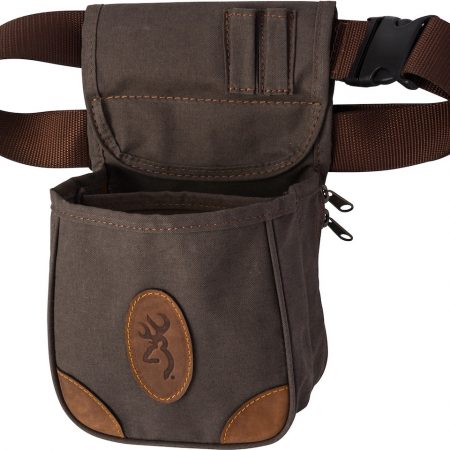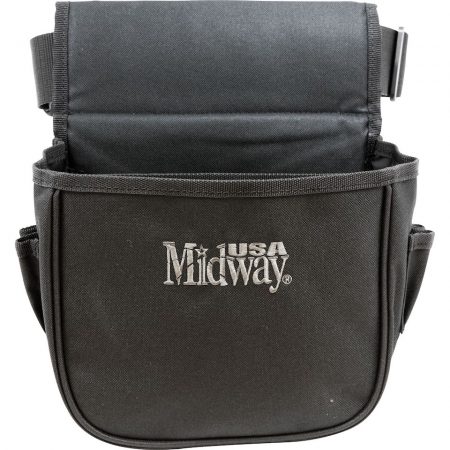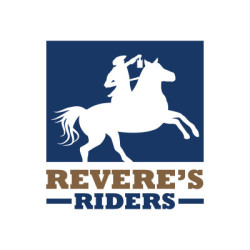What to Bring—Shotgun 116 (Introduction to Sporting Shotgun)
The most common question we are asked is “what to bring?” This page provides some guidelines that will ensure you have the best experience at one of our events. The specific products and vendors below are just suggestions or examples of a type of product that may work well for you. There are many other similar gear options.
All Events
- Our volunteers are neither gunsmiths nor armorers; please ensure your firearm is safe and functional!
- Eye and ear protection is required at all events. We highly suggest electronic ear protection as it makes it easier to hear instruction and line commands.
- Use only the correct ammunition for your gun. Most guns have the proper ammunition type stamped on the barrel. Do not shoot without the proper ammunition. Revere’s Riders strongly suggests the use of factory ammunition. Handloads are generally not necessary at our service-rifle and pistol inspired events—originally these events were intended to be fired with bulk issue “ball” ammunition!
- Dress appropriately for a day outside at a firing range (closed-toe shoes, high neck shirts, long sleeves if weather allows, etc). Our events occur rain or shine. Dress for the weather!
- Avoid loose-fitting clothing, especially around the neck line. You don’t want hot brass going down your shirt!
- A hat with brim will keep the sun out of your eyes and deflect any hot brass headed towards your face.
- Bring a pad and paper for taking notes.
- Bring a pen or marker for taking notes and marking your targets.
- You may want to bring gloves. They protect your hands in inclement weather and also keep your hands from getting torn up working through drills.
- A towel or mat is useful for using in the prone position as well as covering your firearm in inclement or hot weather during breaks.
- A folding chair is nice to have during lunch and history presentations.
- For full day events, pack a lunch (note that a few events will provide lunch; the event listing will specify if lunch will be provided).
- Bring snacks and water. Proper hydration is essential—in the summer plan on one quart per hour as a rule of thumb and supplement your water with sports drinks, salty snacks, etc.
We have a selection of recommended general safety equipment on the What to Bring–All Events page.
Shotgun 116 (Introduction to Sporting Shotgun)
Most important is to bring a safe and functional shotgun. If you haven’t cleaned your shotgun, setting aside time before the event to clean it would be a good idea. If you have doubts about the safety of your shotgun, now would be a good time to have it looked over by a qualified gunsmith or armorer.
- Shotgun Type: For trap, skeet and sporting clays use the following general guidelines to select an appropriate sporting shotgun:
- the most commonly used shotgun type is the “over/under” (a two-barreled shotgun with the barrels on top of each other vertically)
- “side-by-side” shotguns are also appropriate but far less common (a two-barreled shotgun with the barrels arranged side-by-side horizontally)
- semi-auto shotguns are quite usable but be aware that many trap, skeet, and sporting clays ranges prohibit loading more than 2 shotgun shells at a time regardless of the shotgun’s capacity; in addition, many experienced sporting shotgun enthusiasts find getting hit by the horizontally ejected shotgun hull to be annoying
- pump-action shotguns can be used in a pinch, but your arm will likely become fatigued cycling the action before the end of the event
- “defensive” style shotguns with short barrels (typically around 18″) will be a source of frustration and are not recommended; common sporting shotgun barrel lengths are in the 28″ to 32″ range
- shotguns with interchangeable “chokes” are much preferred to a shotgun with either a fixed choke or no choke (i.e., “cylinder bore”)
- if you do not have a shotgun which fits the above criteria, check with the Event Director if a loaner shotgun is available before buying one
- Caliber: Generally, trap, skeet and sporting clays are shot with a 12 gauge shotgun. However, many men of smaller stature, women and children will find that a 16, 20 or even 28 gauge will be less fatiguing to shoot over extended periods. .410 is reserved for advanced shooters and is not recommended for beginners.
- Sights: Sporting shotguns generally have only a bead sight at the end of the barrel; occasionally, a “mid-bead” sight halfway down the shotgun rib will also be present. Sights designed for precision aiming such as traditional iron sights, peep sights, optics of any kind or red-dot sights are generally not useful on a sporting shotgun and will likely be a source of frustration for you.
- Shell Pouch: A “shell pouch” to carry both live shotgun shells and spent hulls can be very handy but not absolutely necessary. Many inexpensive options are available and probably worth the small investment to make your experience a little more convenient.
Recommended Shotgun 116 Equipment
Below is a list of equipment that our instructors have found to be functional, durable and useful:
-
 Buy from MidwayUSAMORE INFO
Buy from MidwayUSAMORE INFOBrowning Lona Shell Pouch
Keep your shells handy with the Browning Lona Pouch. A simple and unobtrusive way to keep your shot shells at your finger tips. Don’t spend your day at the range digging in your pockets or bending over to grab a few shells out of a box. The Lona range pouch is stylish and affordable.
Features
- 100% cotton canvas body
- Crazy Horse leather trim
- Two internal pockets
- Zippered on one side to more easily dump empty shells
- Adjustable nylon web belt with quick release buckle
-
 Buy from MidwayUSAMORE INFO
Buy from MidwayUSAMORE INFOMidwayUSA Shell Pouch
Comfortably carry all your shells during your next round of sporting clays with the MidwayUSA Shell Pouch. Made of durable 400D PVC Coated Polyester, this pouch can easily carry enough shotgun shells for your shotgun sport of choice. The large 9” x 4” x 7.5” compartment is divided into two sections and separates your live rounds from your spent shells. The sides of the bags are equipped with four sewn-in choke holders so you are prepared for the toughest course. A two-inch nylon belt with heavy-duty buckle keeps the pouch securely on your waist, and is adjustable up to 48 inches. Carry your shells confidently with the MidwayUSA Shell Pouch.
